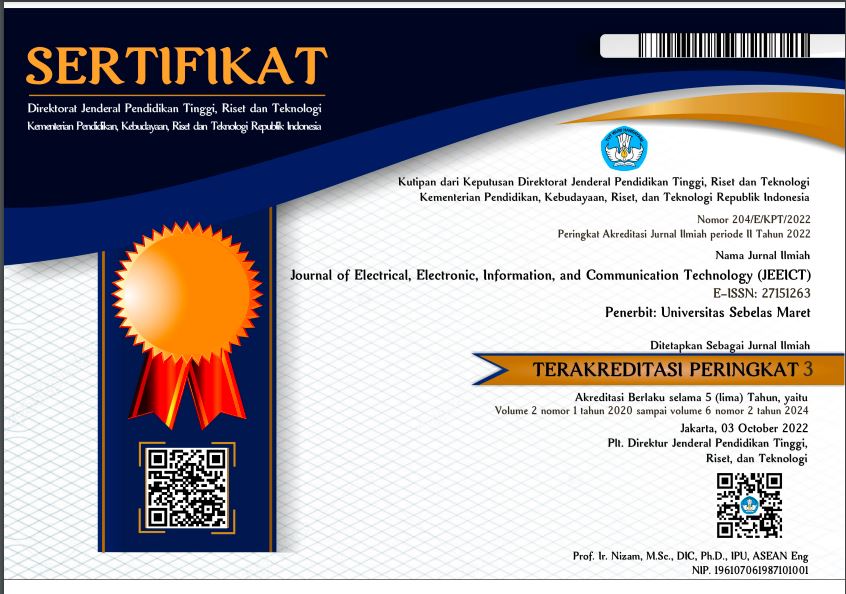Simulation and Techno-Economic Analysis of On-Grid Battery Energy Storage Systems in Indonesia
Abstract
Full Text:
PDFReferences
U.S. Department of Energy. (n.d.). Energy Storage: The Key to a Reliable, Clean Energy Supply. Retrieved from www.energy.gov/articles/energy-storage-key-reliable-clean-electricity-supply
REN21, T. (2018). Renewables 2018 Global Status Report.
B2TKE. (2020). PLTS Bilacenge.
Khasawneh, H. J., Mustafa, M. B., Al-Salaymeh, A., & Saidan, M. (2019). Techno-Economic Evaluation of On-Grid Battery Energy Storage System in Jordan using Homer Pro. AEIT.
Gür, T. M. (2018). Review of electrical energy storage technologies, materials and systems: challenges. Energy & Environmental Science, 2696–2767.
Hart , D., & Sarkissian, A. (2016). Deployment of Grid-Scale Batteries in the United States. U.S.: U.S. Department of Energy.
Electric Power Research Institute. (2010). Electrical energy storage technology options. CA: Palo ALto.
Fu, R., Remo, T., & Margolis, R. (2018). 2018 U.S. Utility-Scale PhotovoltaicsPlus-Energy Storage System Costs Benchmark. U.S.: National Renewable Energy Laboratory.
Dunn, B., Kamath, H., & Tarascon, J. M. (2011). Electrical energy storage for the grid: A battery of choices. Science, 334(6058), 928–935.
DOE OFFICE OF INDIAN ENERGY. (2015). Levelized Cost of Energy (LCOE). U.S. Departement Energy.
Bill Watkins. (2014, Juli 10). Lithium or Vanadium: In Energy Storage, It’s No Contest. (renewableenergyworld) Retrieved Mei 10, 2020, from https://www.renewableenergyworld.com/2014/07/10/lithium-or-vanadium-in-energy-storage-its-no-contest/#gref
Refbacks
- There are currently no refbacks.







